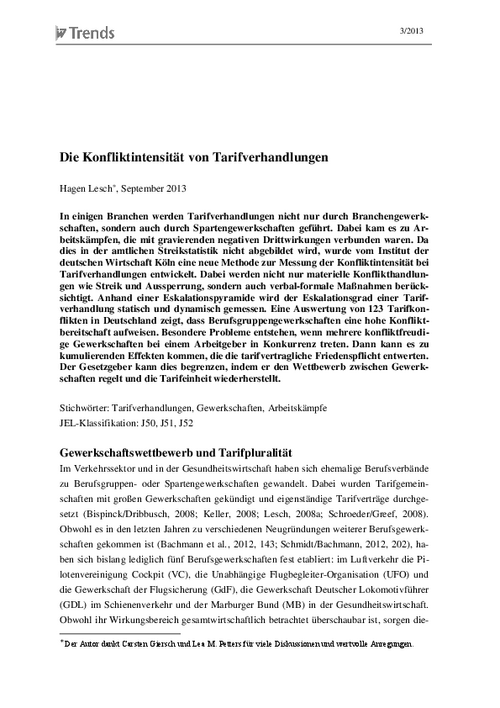In some industries wage negotiations are conducted not only by labour unions covering the whole sector but also by craft unions representing single occupations. This has led to in-dustrial action with severely detrimental consequences for third parties. Since such effects are not captured in the official strike statistics, the Cologne Institute for Economic Research (IW) has developed a new method for measuring the intensity of conflict during collective bargaining. It takes account not only of material industrial action such as strikes and lockouts but also of verbal and formal measures. Using an escalation pyramid, the degree to which labour conflicts escalate is measured statically and dynamically. An evaluation of 123 wage disputes in Germany shows that craft unions are especially confrontational. Particular problems arise if several conflict-prone unions representing employees of the same company enter into competition with each other. The cumulative effects of such a situation can undermine the legal ban on industrial action while a collective wage agreement is in force. This damage could be limited by legislation regulating competition between trade unions and restoring exclusivity for wage agreements at the plant level (one company = one agreement).

The Intensity of Conflict in Collective Bargaining
IW-Trends


Hagen Lesch: Die Konfliktintensität von Tarifverhandlungen
IW-Trends

More on the topic

The 9th IW Survey of Further Training
In 2016 some 85 per cent of companies in Germany were active in continuing vocational training, using a broad mix of methods.
IW
Has the German Economy Reached its Limit?: Skilled Labour Shortages as a Brake on Growth
The German economy is performing significantly better than was expected in the first few months of this year. During the course of 2017, certain early fears – especially of a weakening of the global economy due to increasing protectionism – have proved ...
IW